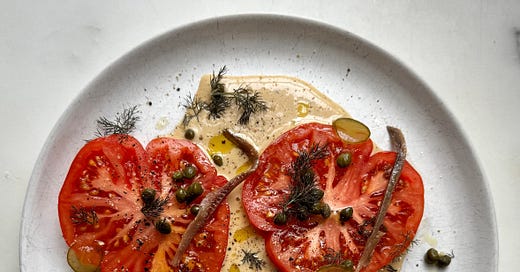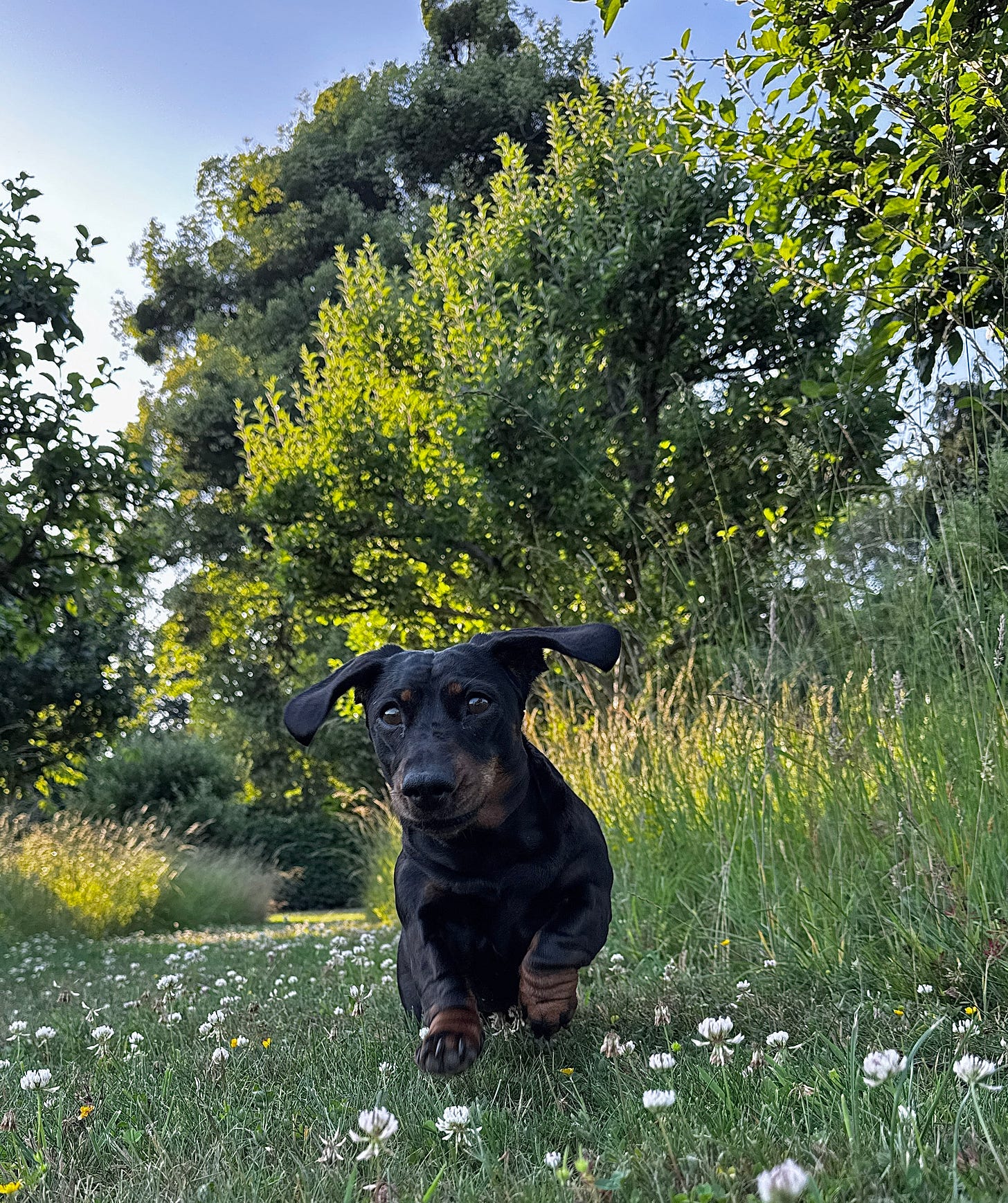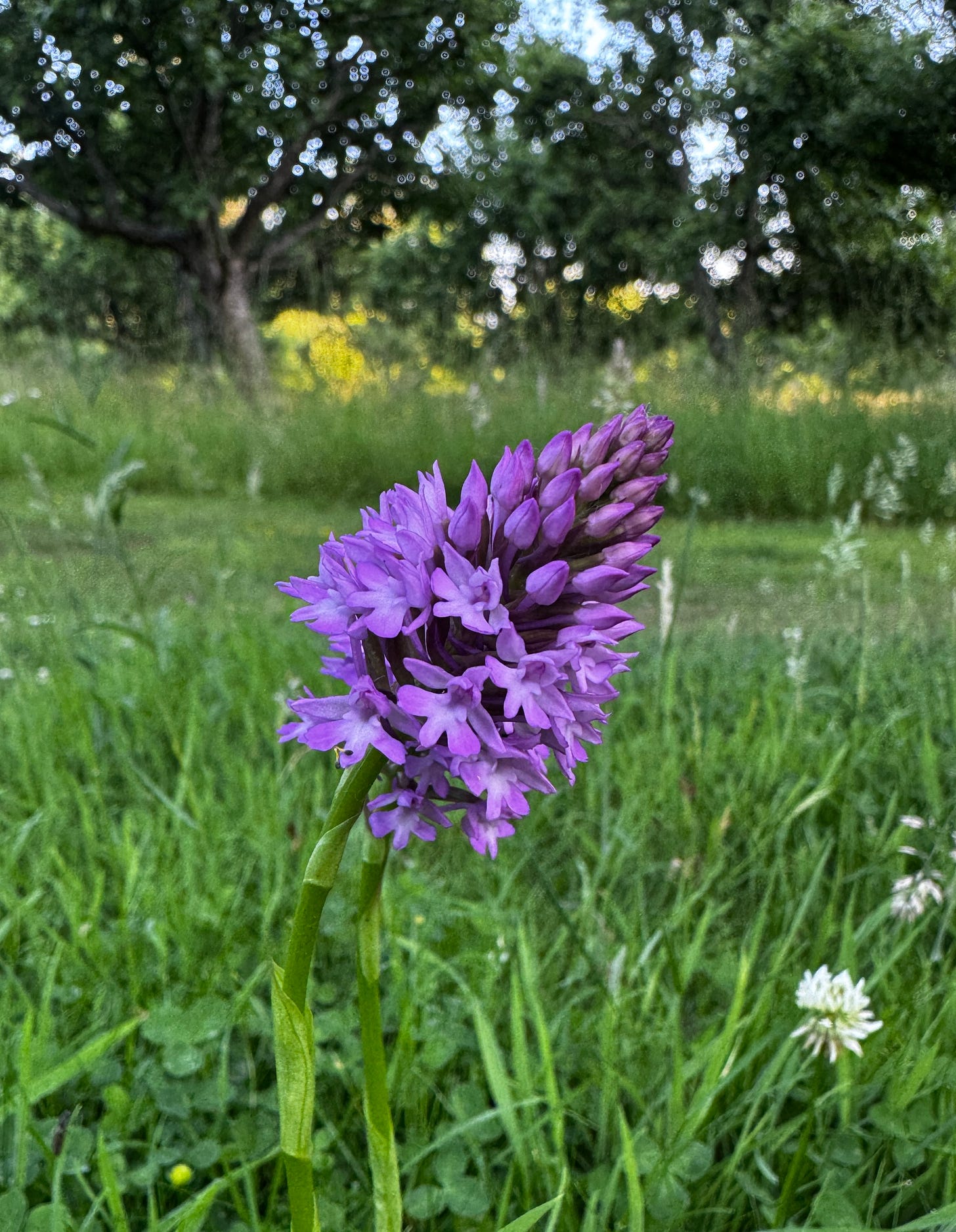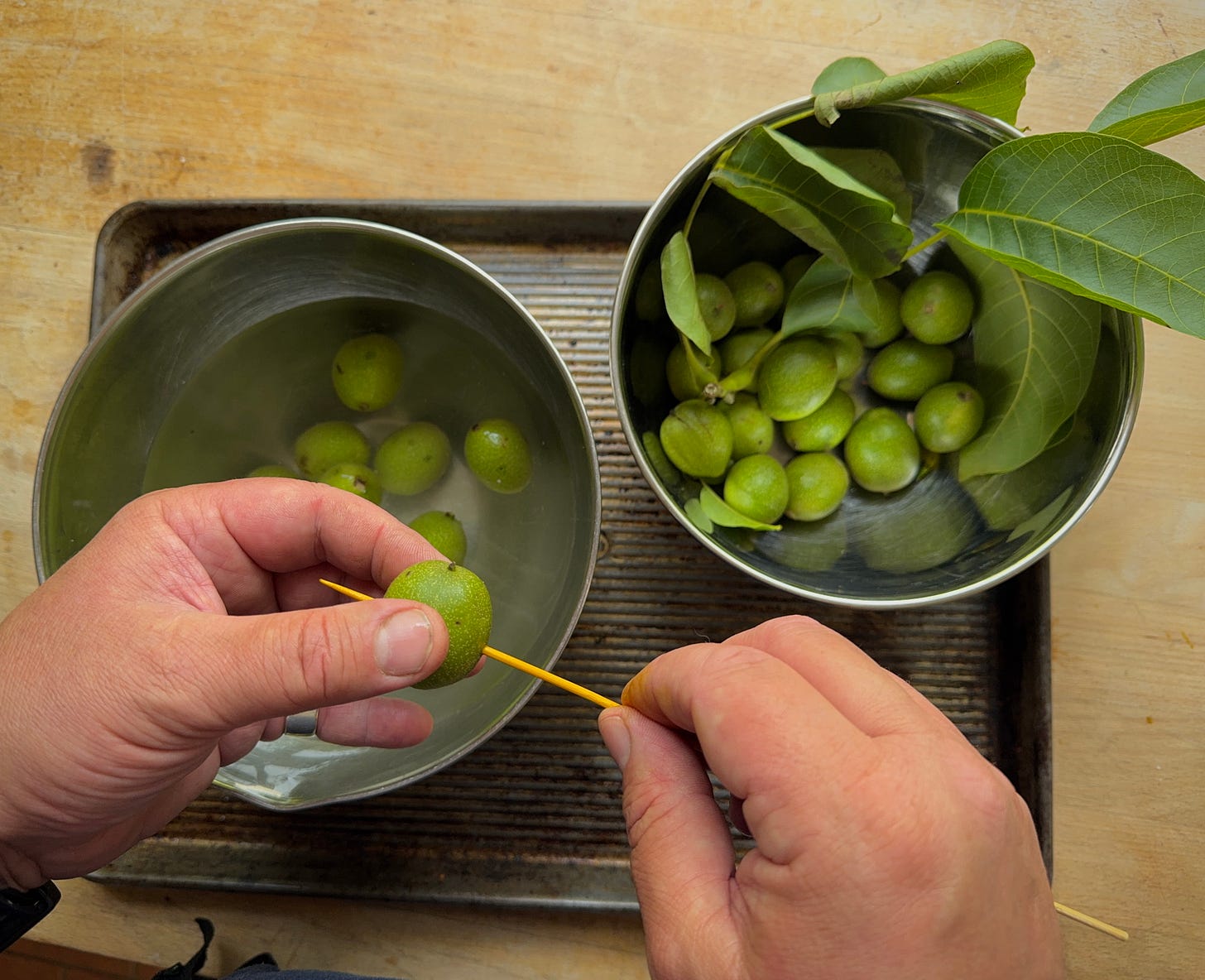Pickled walnuts, and other nice things
Pickled green walnuts, Mr Ellis the enigma, and big ripe tomatoes ‘tonnata’ style
“A teacher affects eternity; he can never tell where his influence stops”
Henry Adams 1838 - 1918
West Berkshire, June 2025
Mr Ellis was a teacher of mine from a long time ago, and as young lads, we would marvel at his cigarette rolling skills and his darkened, yellow stained fingers. He’d let us roll up his smokes for him on the odd occasion if we were lucky. It was quietly rumoured that he ate his lunch with only one hand, using just a fork as he had lived in America for a part of his life, and with that, we were severely impressed. He would smoke his roll ups at break time, always dressed in tweed with Brylcreamed, silvery grey quiffed hair and an immaculately kept moustache.
An enigma.
Raymond Ellis.
Quite the dapper gentleman.
I always assumed his fingers were stained from the years of rolling loose tobacco, though perhaps like me, he had a penchant for pickling green walnuts.
Fields
Every evening around seven, fortunate as I am, I walk out through the black wrought iron gates with the gentle hum of bumblebees bathed in pollen in the white roses that climb the wall and the crunch of the warm, golden gravel under my feet. This last week the air has been hot, the sun still above the trees as the evening light filters down through the arch of knotted old stems of wisteria that hang downwards, tendrils drooping low so they tap you on the shoulder as you brush past to let you know that they’re there.
I pick up my little dog and hold her close against my chest as I walk down the stone stairs to the grass. She’s unable to do steps as she’s had spinal issues in the past.
Sedge, Bent and Timothy grass stalks with their tightly furled tips, violet and pastel green, sway in the wind as the hot air begins to move as it cools after the heat of the day. White clover and Birdsfoot trefoil stretch out on the mown track through the now waist high stems of the wild grasses that lean this way and that under the fruit trees. Vivid clusters of Selfheal, Mallow and Cat’s ear meld in little bright pockets of laughter in the short mown grass. I place my small dachshund on the ground and she smears her muzzle in a patch where it’s likely a Roe deer has stopped as it passes through the undergrowth. I was startled a few evenings ago when a Buck with fine antlers leapt out from the hedge by the lower gates taking both myself and my little dog by surprise as he vaulted the fence in one graceful jump.
The hives are still unusually busy as I walk past them with bees pinging upwards, launching themselves skyward at quite an angle. The entrance block of Hive One is packed with a flurry of homecoming bees, swirling forward and back in a three dimensional dance as they queue to get inside, legs heavy with balls of bright pollen for their stores, a sign that all is well with the hive. With what seems like a strong nectar flow, now is their time to make honey and they give me the feeling that they don’t wish to be disturbed, and though my plan was to check through them this week, that can wait. Let them concentrate on filling their stores for now. There is plenty of time left this summer for beekeeping, so as I walk past the two little hives, I stop to tell them what’s new, more out of tradition as it is said that as bees are like family then any news should be shared. I’ll go with this purely out of tradition, but then again I firmly believe that they know the sound of my voice and I like that they know who I am. For those of you who follow the ups and downs of these colonies in my writing, you will know that I’m keeping faith that Hive Two has requeened itself after my intervention at the beginning of June after swarming, though I must wait another two weeks before opening or fear that the new Queen if indeed she is there, might be rejected. For now, all seems calm. They look very focused and aren’t busy with my presence next to the hive as I watch them.
Against the brick wall if you know where to look is a tangle of wild strawberries that are tucked beneath their scraggy leaves where the brick meets the soil. Their hiding place is revealed only to those with a keen eye by the little white petals and the tiny garnet red fruits that are easy to miss. I pick a small handful, and each tiny berry bursts with a memory of childhood, far from the prosaic sour version of what we might find in the shops today.
From the stagnant standing water in the lower field, an Emporer dragonfly darts through the heads of the grass whilst my dachshund hides where she thinks I can’t see her, betrayed only by the movement of the long sedge stems as she knocks her way through the undergrowth searching for the cool to lay down, emerging covered in pollen and seeds and very contented for it. A bright Downy Emerald hovers near my head, vibrating as it drifts, its bright apple green eyes and gorgeous wings amaze me as it deftly plucks midges from the air.
The last of the elderflower heads are still easy to spot as they droop, powdery white in the distance against the tree line, I can see one of my patches has still enough for a batch of some concoction or other before the flowers turn to hard green berries that will then turn a deep bloody purple and stain my hands once again as I pick them as summer approaches its end.
Woodlands
In the high fields where over the last couple of years we have planted a Truffle orchard, a place where over two hundred Beech and Oak saplings, their young roots rubbed with the spores of Summer Truffle (tuber aestivum), set out in a grove where in decades to come it will surely be a fine place to walk and look up at the canopy, a woodland where one day we might be fortunate enough to reap black treasure from the soil in their roots.
And in centuries to come, for those who will walk there, the story of how those magnificent trees came to be will surely be lost.
On the hill, blackthorn hedges line the edge of the forest, thorny bushes that early in spring come alive with a tiny white blossom that signifies the end of winter, that promises spring. The fine flowers have now long gone but the sloes are ripening already as the year ticks by. The astringent little fruits make a fine bottle of pink gin but will pucker your mouth if you pick one to eat.
Crab apples and rosehips continue the story of summer here, the small hard apples clustered on the branches of the tree near the lake, nowhere near ready but biding their time till late summer when they’ll drop. The large pink wild rose bushes under where the ducks hide from Socks the cat who just can’t help himself, are now almost empty of petals. I’m partly responsible for this as I needed a batch of the flowers to add to a drum of my vinegar, turning it from light clear gold to a blushing rose pink. Where there were once flowers are now the beginnings of the rosehips that will keep me busy in autumn.
Pickled walnuts
Part One -The brine
My hands this week, or at least my fingers and thumb of my right hand are stained a deep yellowish brown and I’m reminded of Mr Ellis.
Juglone is the culprit. The initially harmless clear juice seeps from the green walnuts as you pierce them. A natural dye that if you let it, will stain everything indelibly for weeks as it reacts with the air, its colour deepening to a greenish yellowy black as it oxidises.
The little bright green walnuts have a short window for pickling so if this is your thing, pick them from the trees now, before the shell inside starts to develop. Firstly locate your tree and collect what you can, then use a thin skewer. You should easily be able to insert the spike through the nut, meeting no resistance inside, and it is this that tells you that they’re ready to pick. June and July are the time to collect them. The longer in the month you leave it the more likely the shell will begin to harden under the thick green skin and then you’ll be out of luck until next year.
I don’t wear gloves as they will invariably tear and then the whole point of wearing them is futile, so I just try to be careful. Avoid performing this task on a wooden bench, for the owner of that bench will never forgive you.
Use a tray, please.
Quite simply
Take one litre of water and around sixty grams of sea salt. Mix them so that the salt is dissolved, then with a long sharp skewer, prick the green walnuts straight through, two or three times to ensure that the brine can work its magic as they must soak for a week. The smell is very special, a true mixture of pine and lime all rolled into one. But don’t let the drips get on your clothes.
Let all of the walnuts sit in the brine, cover them with parchment, and if you need to weigh them down, then place a saucer on top. The brine will need changing on day three and day six. On day eight they can be drained and then placed on a metal tray to go out to dry in the sun and to blacken for ten days.
This should keep you busy enough for the next week or so by which time I’ll share my pickling recipe to complete the task.
Not Vitello Tonnato
If you’ve never made a tuna sauce before, then this will be a revelation. Though I am a very big fan of the classic veal recipe, pot roasted thinly sliced and blushing pink, many are not, and what with tomato season being in full swing I’m sharing a dish that I hope you might put on your tables.
I’m not one for exact quantities here so think of this as more of a guide. For instance, if you like anchovies, add more. Don’t like capers? Leave them out. A dish like this isn’t to be fussed over. It should just be. It should just happen. Let it do its own thing and it will be better for it.
Ox heart tomatoes with tonnato sauce, anchovy and pickles
Using the sweetest Coeur de Boeuf tomatoes sat on top of a puddle of rich tuna sauce, little anchovies, capers and a sliced pickle or two.
The sauce should be thick, creamy and rich, the tomatoes warm from the sunshine with a good olive oil and the sharpness from the condiments it is a plate to scoop up with crusty bread.
Take one tin of tuna and drain it. White tuna in oil is good, Ortiz is a very nice brand if you like that sort of thing, and you can keep the oil for the dressing, though to be fair any tin of tuna will do a good job.
Hard boil three large eggs and when cooled peel them and break them apart.
Place the tuna and eggs into a blender and add six or so anchovy fillets, a small handful of capers and the fine zest from a lemon.
Turn on the blender and let it run for a minute ensuring the ingredients become a smooth paste. Add the juice of half a lemon and a few twists of black pepper and then turn the blender to low.
Slowly add about a small cup of good olive oil to the blender allowing the mixture to become thick and creamy.
Taste the sauce and season with salt and pepper as you see fit and when you are happy then it’s ready to chill for an hour.
When the sauce has sat, loosen it up with a good stir and spoon it over the centre of a plate. Slice a great big tomato and arrange it on top, along with a few split anchovies, a spoonful of capers, a sliced pickled cucumber and a good glug of olive oil. Sprinkle a little salt over the tomatoes and you are ready to dive in. It is especially good with Pane carasau, thin sheets of bread, baked in the oven to warm them through with a little olive oil and rosemary torn over the layers until they are golden and brittle. If that isn’t an option then the crustiest loaf you can find will suffice.
Eat it all up greedily, then scrape your plate clean with the bread.
Until next time,
William











Magnificent scenic/nature writing, Will! 👏 You should send some of these to the New Yorker and offer to write a periodic series. The motif of A Private Chef will appeal to their core demographic. They reject almost everything, but you should do it anyway. Too bad Gourmet Magazine went kaput. I've seen a few folks on Substack get cook book deals. You should ask them to intro you to their agents/publishers. We gotta get that book (with updated content) into print!
That is all. 🌱
Beautifully written, as always, Will. I save your posts to read in the quiet calm of a morning or, if the weather cooperates, a soft breezy afternoon with all the doors and windows open. Thank you.